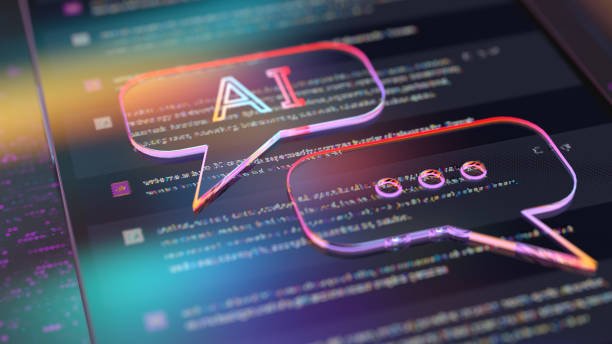Why AI Voice Analysis Matters for Depression Detection
Depression, affecting over 322 million people globally, is a leading cause of disability. Traditional diagnostic methods rely on subjective assessments, which can be time-consuming and inconsistent. AI voice analysis offers a non-invasive, scalable solution by analyzing vocal patterns—such as pitch, tone, and pauses—to detect depression with high accuracy. For anxiety specialists, these tools complement existing practices by providing objective data to inform treatment plans.
Key benefits include:
- Early Detection: Identifies symptoms before they escalate, reducing risks like suicide or chronic mental health issues.
- Accessibility: Enables remote screening via smartphones or telehealth platforms.
- Efficiency: Automates initial assessments, saving time for clinicians.
- Client-Centered Care: Provides data-driven insights to personalize therapy.
This article delves into the top trends shaping AI voice analysis for depression detection in 2025, tailored for mental health professionals seeking to enhance client engagement and outcomes.
Top Trends in AI Voice Analysis for Depression Detection
1. Advanced Deep Learning Algorithms
AI voice analysis is leveraging sophisticated deep learning models to improve detection accuracy.
- Wav2vec 2.0 and Transformers: These models extract high-quality speech features, achieving accuracies up to 96.49% on datasets like DAIC-WOZ. They analyze vocal characteristics like monotone speech or pauses, common in depression.
- Parallel Convolutional Neural Networks (CNNs): Combined with transformers, parallel CNNs focus on local and temporal speech patterns, enhancing detection with minimal computational complexity.
- Impact for Therapists: These algorithms provide clinical-grade assessments, enabling anxiety specialists to prioritize clients with severe symptoms.
For more on AI advancements, see AI in mental health clinics.
2. Multimodal Data Integration
Combining voice analysis with other data sources improves diagnostic precision.
- Audio-Visual Fusion: Integrating vocal data with facial expressions or text from social media posts enhances accuracy by capturing emotional cues across modalities.
- Wearable Device Data: Monitoring sleep patterns, heart rate, and voice intonation via wearables provides a holistic view of mental health.
- Benefits for Anxiety Specialists: Multimodal tools offer comprehensive insights, allowing therapists to tailor interventions for clients with anxiety and depression overlap.
Learn about multimodal integration in predictive analytics for mental health.
3. Voice Biomarker Refinement
Voice biomarkers—specific vocal patterns like low pitch or reduced inflection—are becoming more precise.
- Key Biomarkers: Depressed individuals often exhibit monotone speech, softer tones, and frequent pauses. Anxiety specialists can use these markers to identify co-occurring conditions like anxiety, where rapid speech and breathlessness are common.
- AI Tools: Platforms like Kintsugi and Ellipsis Health achieve over 80% accuracy by analyzing 20-second audio clips, doubling human practitioners’ detection rates.
- Application: These tools integrate into telehealth platforms, enabling real-time screening during virtual sessions.
For telehealth integration, explore HIPAA-compliant teletherapy platforms.
4. Explainable AI (XAI) for Trustworthiness
Trustworthy AI (TAI) is critical for clinical adoption, addressing concerns about “black box” algorithms.
- Explainable Models: XAI techniques provide transparent metrics, explaining which vocal features (e.g., pitch variability) indicate depression.
- Clinical Relevance: Tools like SRI’s AI voice analysis offer clinicians interpretable scores, ensuring decisions are evidence-based.
- Why It Matters: Anxiety specialists gain confidence in AI tools, fostering trust with clients and regulators.
For ethical AI practices, see ethical AI use in mental health.
5. Integration with Chatbots and Virtual Assistants
AI chatbots are incorporating voice analysis for real-time depression screening.
- DEPRA Chatbot: This non-clinical tool uses structured interview guides (e.g., Hamilton Depression Scale) to detect early depression via conversational voice analysis.
- Personalized Interactions: Chatbots like Woebot combine NLP with voice biomarkers to deliver CBT-based interventions, supporting clients between sessions.
- HIPAA Compliance: Chatbots must use 256-bit encryption and offer BAAs to protect PHI, aligning with HIPAA-compliant patient portals.
For chatbot implementation, see AI chatbots for anxiety specialists.
6. Voice Analysis in Telehealth and Remote Monitoring
AI voice analysis is enhancing telehealth by enabling continuous monitoring.
- Real-Time Assessments: Tools like Ellipsis Health integrate with telehealth platforms to analyze voice during sessions, providing instant depression scores.
- Longitudinal Monitoring: Regular voice recordings via smartphone apps track symptom changes, alerting therapists to potential relapses.
- Impact for Therapists: Enables remote care for clients with limited access, as discussed in teletherapy platforms for mental health.
7. Focus on Ethical and Privacy Considerations
As AI voice analysis grows, ethical and privacy concerns are paramount.
- HIPAA Compliance: Tools must use end-to-end encryption, secure data storage, and signed BAAs to protect PHI.
- Client Consent: Transparent data collection policies and opt-in consent are essential to build trust.
- Bias Mitigation: Algorithms must be trained on diverse datasets to avoid bias across gender, culture, or language.
- Best Practices: Regular audits and staff training ensure compliance, as outlined in HIPAA-compliant contact forms.
8. Smartphone-Based Accessibility
Smartphone apps are making voice analysis widely accessible.
- Ease of Use: Clients can record short audio clips via apps like Kintsugi or Sonde, enabling at-home screening.
- Cost-Effectiveness: Smartphone data is readily available, reducing the need for specialized equipment.
- Impact for Clients: Lowers barriers for those hesitant to seek in-person care, especially younger or rural populations.
For mobile optimization, see mobile-friendly websites for therapists.
9. Voice Analysis for Specific Populations
AI tools are being tailored for specific groups, such as adolescents or professionals.
- Adolescents: Algorithms detect depression in children’s speech with 80% accuracy, using features like low-pitched voices and repeatable inflections.
- CEOs and Professionals: Studies analyze vocal markers in high-pressure roles, identifying hidden depression.
- Relevance for Therapists: Anxiety specialists can use tailored tools to address unique client needs, such as workplace stress or youth mental health.
10. Predictive Analytics for Proactive Care
AI voice analysis is shifting toward predictive models to prevent depression escalation.
- Trend Analysis: Tools like Ellipsis Health use longitudinal data to predict symptom worsening, enabling early intervention.
- Proactive Alerts: Smartphone apps notify therapists when vocal changes suggest a relapse, supporting timely care.
- Future Potential: Predictive models may integrate genetic and environmental data for personalized treatment plans.
For more, explore predictive analytics for mental health.
Challenges and Solutions
While AI voice analysis offers significant potential, challenges remain:
- Data Privacy: Clients may fear data misuse.
- Solution: Use HIPAA-compliant platforms with clear privacy policies.
- Algorithm Bias: Models may underperform for diverse populations.
- Solution: Train on inclusive datasets, as emphasized in ethical AI guidelines.
- Clinical Integration: Therapists may resist AI due to lack of trust.
- Solution: Adopt XAI tools to provide transparent, interpretable results.
- Data Limitations: Small datasets can reduce model accuracy.
- Solution: Use pre-trained models like wav2vec 2.0 to overcome limited data.
Best Practices for Anxiety Specialists
To effectively implement AI voice analysis, anxiety specialists should:
- Choose HIPAA-Compliant Tools: Select platforms like Kintsugi or Ellipsis Health with BAAs and encryption.
- Integrate with EHRs: Sync voice analysis data with systems like SimplePractice for seamless workflows.
- Educate Clients: Explain how voice analysis works and its benefits to build trust.
- Monitor Performance: Use analytics to track tool accuracy and client engagement.
- Stay Updated: Follow advancements in AI, as discussed in AI in mental health clinics.
The Future of AI Voice Analysis
In 2025 and beyond, AI voice analysis for depression detection will evolve:
- Multimodal Advancements: Greater integration of voice, visual, and physiological data for holistic assessments.
- Personalized Interventions: AI will deliver tailored CBT or mindfulness prompts based on vocal cues.
- Global Accessibility: Smartphone-based tools will expand reach to underserved populations.
- Regulatory Standards: Stricter guidelines will ensure ethical AI use, aligning with HIPAA and global privacy laws.
Conclusion
AI voice analysis is transforming depression detection in 2025, offering anxiety specialists tools to enhance early diagnosis, accessibility, and client engagement. Trends like advanced deep learning, multimodal integration, and ethical AI practices are driving innovation, while HIPAA-compliant platforms ensure data security. By adopting these tools, therapists can provide data-driven, client-centered care.
For expert support in implementing AI voice analysis and other digital solutions, visit Mental Health IT Solutions, specializing in secure tools for mental health professionals.







